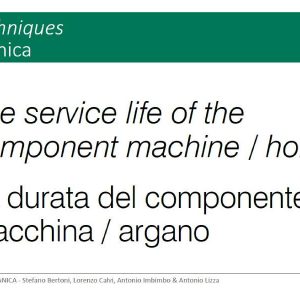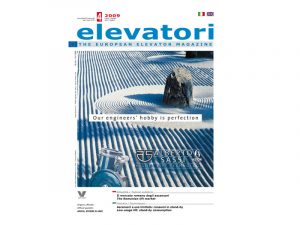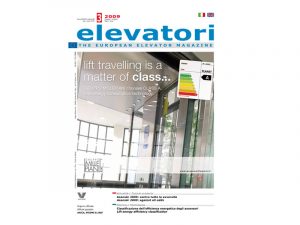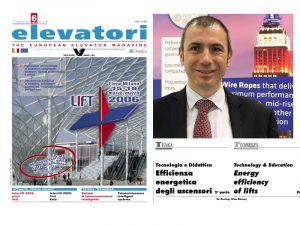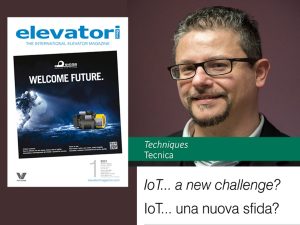Customer experience in the elevator industry
The elevator industry
Today, all industries are subject to radical changes and our elevator industry is not an exception.Today, all industries are subject to radical changes and our elevator industry is not an exception. Disruptions can come from anywhere. The product is a key factor, though it is by far not the only one to be taken into account.
After all, the product is no more than a means to attain the main goal of a business: the sum of positive customer experiences, that allow to create value for the company in a sustainable way.It is this dimension to which we want to draw the attention of all actors of an industry, maybe too product-oriented.We focus on customers that are at the end of the chain and, therefore, are common to manufacturers, installers or maintenance companies: the final customers at the residential segment.
Besides, when it comes to analyse their experience, we must take into account their most relevant dimensions: user, owner and citizen. As users of elevators, with characteristics that are common to other users of other segments; as owners that can be part, to a greater or lesser extent, of the purchase decision; and finally, we mustn’t forget the facet of customers as citizens, which will become increasingly important due to the growing concern about ethical and environmental issues.Let’s start with a statement that must be assumed by the Management of all companies as soon as possible: we don’t sell products or services, not even solutions, term that carries a functional connotation. We sell customer experiences, a more global concept that integrates the product-service-solution.
THE CUSTOMER EXPERIENCE
Customer experience is the result of the interactions that a customer has with a certain company before, during and after her/his relationship with it is finished.
Customer experience is not just what makes customers stay with us or go to the competition, but also what makes customers decide to initiate a relationship with our company or to get back in touch in the future.
But if what we supply are customer experiences, how can we organize internally to provide successful experiences? Should we create a Customer Experience R&D? Should we commission it to the Marketing Team? Or to the Operations Team? Or maybe, to the very Management? Quite recently, Kone published an article explaining the challenges of developing new solutions and new experiences for customers. It seems that this challenge will be carried out by Kone’s New Services and Solutions Division, a business unit that could serve as a kind of Customer Experience Lab.
Within the elevator industry, Kone has based its competitive advantage on Innovation.
Two decades ago, its R&D Department transformed the industry with the launch of the gearless machine-roomless elevator and maybe they will lead innovation with regards to Customer Experience.
CUSTOMER EXPERIENCE LABS
Undoubtedly, this kind of initiatives are going to provide a benchmark for organization management in the next years. Customer Experience Labs will be part of companies, as they already are in companies like IBM. And Customer Experience Managers will be a job like any other, as it already is in the hospitality industry. Contrary to product R&D departments, Customer Experience labs are, in principle, accessible to all companies. I say “in principle” because it is necessary to count on some capabilities that are not very common and don’t depend exclusively on the acquisition of certain technologies.
As a preliminary step, a real willingness to simplify is required. Especially in companies that have developed a complex set of products and services and, implementing an administration and control policy framework in order to manage this complexity, and thus moving further away from customers. From that point, it is necessary to do something that’s easy to say, but hard to apply. We must have time to talk to customers (personal interviews, focus groups…) and the capability to understand them. If we want to ensure results, we also need to involve the people who provide the service.
Then comes the heart of the process, the design of the so-called Customer Journey. One of the reasons why service companies fail is the lack of capability to design, in its broadest sense. It is crucial to take advantage of all human and technological resources available, to design the whole project in a way that the only shock is the admiration of customers for something very positive that they weren’t expecting. The challenge of managing customer experience is quite big, since the environment in which experiences are “constructed” is unpredictable and conditioned by many factors, some of which are very difficult to control.
Complexity begins by understanding the expectations of our customers, which raises the minimum standard to surpass. These expectations come from the level of product/service in each country (pay attention to companies growing in other markets), from common knowledge about the product category, in our case based on previous experiences with elevators, and also come from previous knowledge of our brand.But it is not enough to know the expectations. Customer experience depends on customers’ perception of reality, not reality itself. That means, a company may have provided an exquisite preventive maintenance and attended all breakdowns promptly for years but, if the customer doesn’t perceive this service, customer experience may simply not exist.
This fact is of huge importance when it comes to create touch-points that increase the degree of positive perception. The management of customer experience affects all employees working in a company (all levels and duties), since to a greater or lesser extent, and in a direct or indirect way, all of them contribute to shape the customer experience.
The integration of the management of customer experience is a long process, though it has the advantage that any company can face the development of services and improve its customer experience if it sets its mind to it. One might even say that, because of their proximity to customers and their agility, SMEs are far better positioned than big companies to undertake this kind of projects.
José María Compagni
Academic Director Docensas
Read more: IOT… A NEW CHALLENGE?


